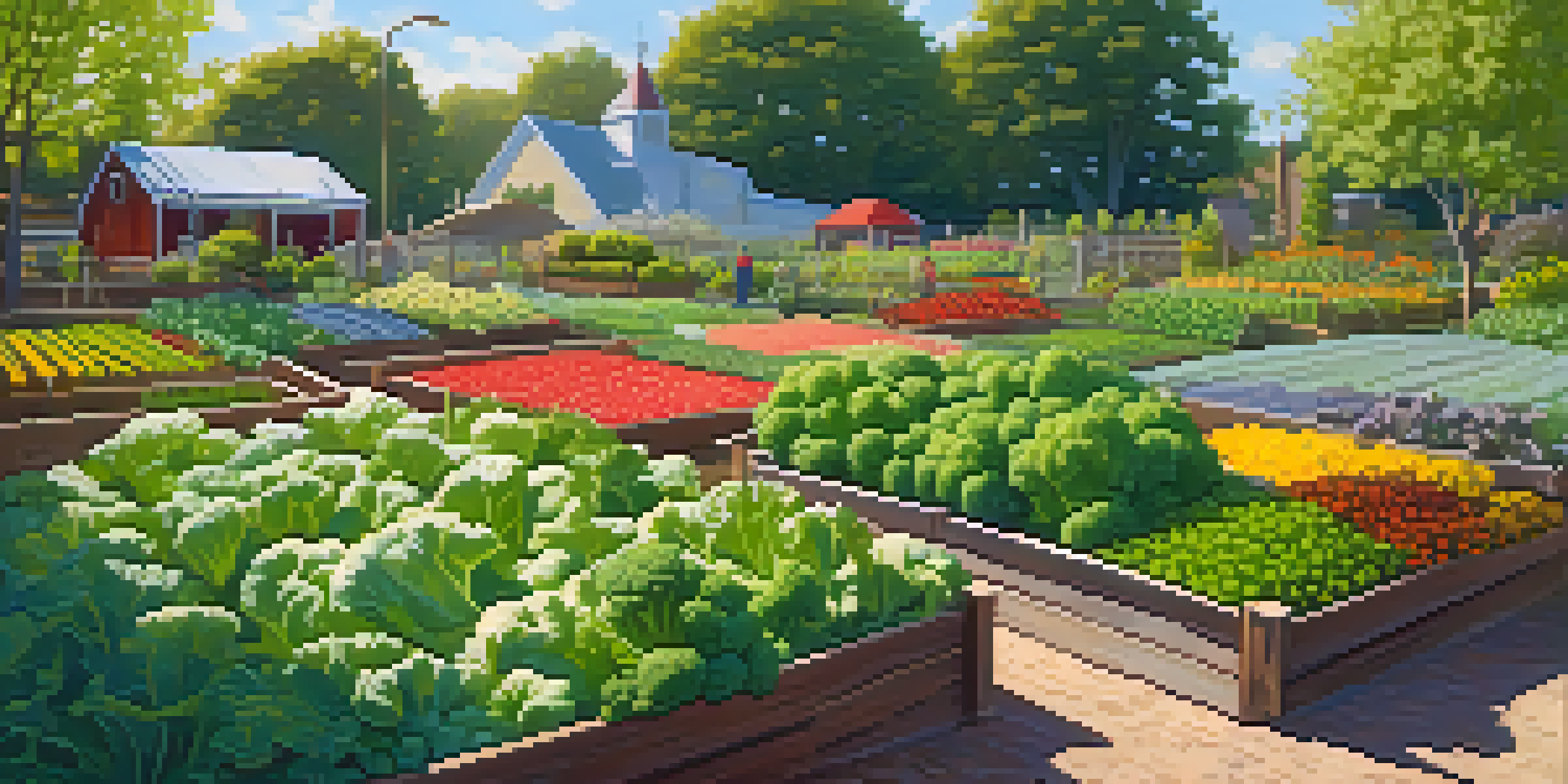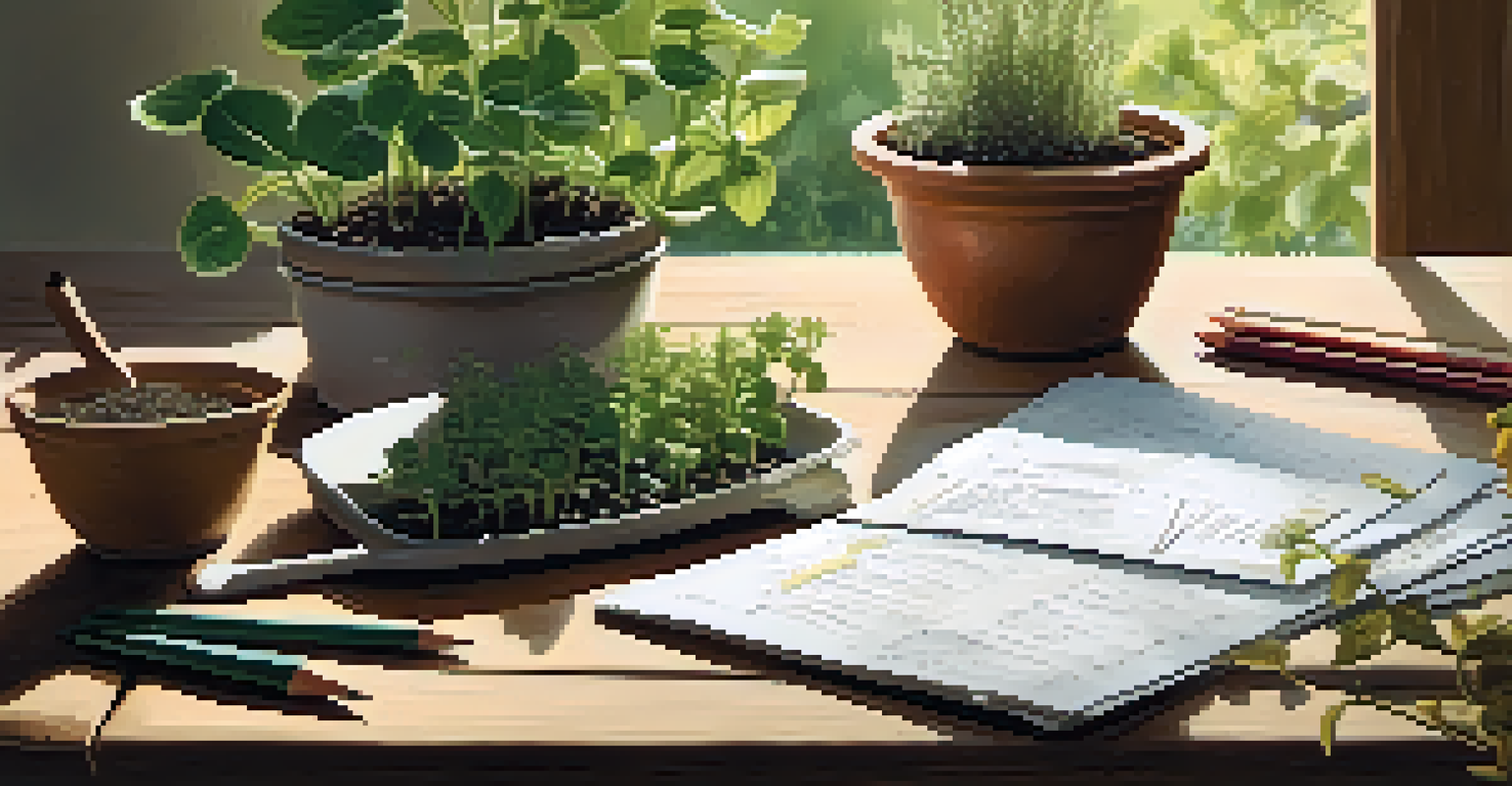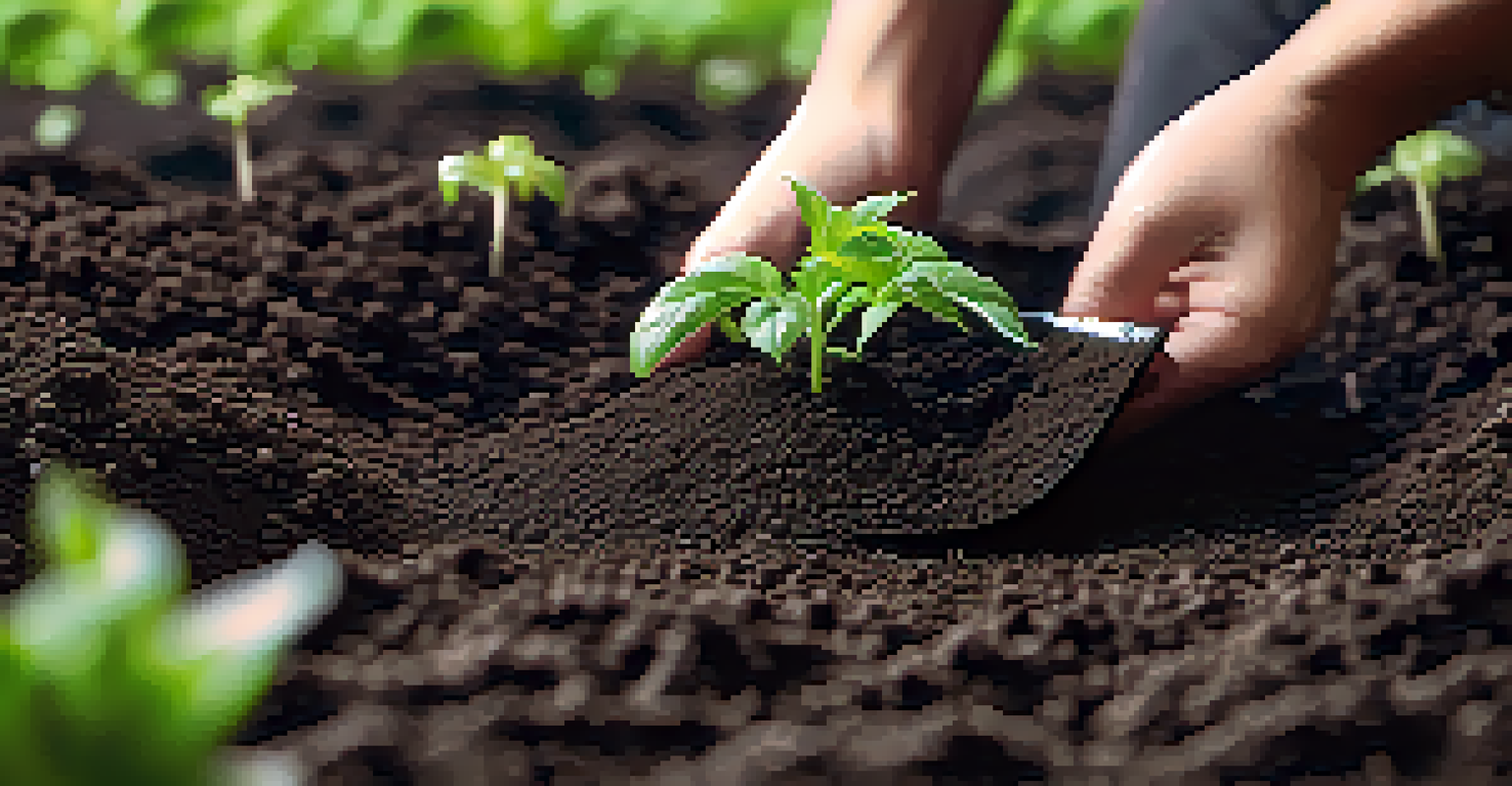Seasonal Planting: Timing for a Sustainable Garden

Understanding Seasonal Planting for Your Garden
Seasonal planting involves choosing the right plants for the right time of year. By aligning your gardening efforts with the seasons, you can create a flourishing environment that thrives naturally. This approach not only enhances the beauty of your garden but also promotes biodiversity and sustainability.
To plant a garden is to believe in tomorrow.
Different plants have unique growing cycles, making it crucial to understand which varieties flourish during specific seasons. For example, cool-season crops like lettuce and broccoli thrive in early spring and fall, while warm-season plants such as tomatoes and peppers prefer summer. By knowing these patterns, you can maximize your garden's potential.
Additionally, seasonal planting helps in conserving resources, such as water and nutrients. When plants are grown during their appropriate season, they require less intervention and can better utilize the natural conditions around them. This leads to a more sustainable gardening practice.
The Benefits of Timing Your Planting
Timing your planting correctly can lead to a bountiful harvest and healthier plants. When you plant at the right moment, you give your garden the best chance to thrive. Healthy plants are more resilient to pests and diseases, reducing the need for chemical interventions.

Moreover, planting in sync with the seasons can extend your growing season. For instance, by using succession planting techniques, you can stagger crops to ensure that your garden produces food from spring through fall. This not only provides a steady supply of fresh produce but also keeps your garden vibrant.
Timing is Key for Plant Success
Planting at the right time maximizes growth potential, leading to healthier plants and a more abundant harvest.
Finally, timing influences the flavor of your harvest. Many vegetables taste better when grown during their ideal season, as they benefit from optimal sunlight and temperature. For example, tomatoes grown in the heat of summer will often be sweeter than those grown in cooler conditions.
Planning Your Planting Schedule
Creating a planting schedule is essential for successful seasonal gardening. Start by researching the specific plants you want to grow and their optimal planting times. Many gardening resources provide planting calendars tailored to your climate zone, making it easier to plan.
The best time to plant a tree was twenty years ago. The second best time is now.
Next, consider using a garden journal. Document your planting dates, growth progress, and any challenges you encounter. This record will not only help you refine your techniques but also allow you to anticipate the needs of your garden in future seasons.
Lastly, don’t forget to account for local weather patterns. While planting schedules provide general guidelines, unexpected frosts or heatwaves can impact growth. Being flexible and attentive to weather changes will help you adapt your schedule for the best results.
Selecting the Right Plants for Each Season
Choosing the right plants is crucial for successful seasonal gardening. Start by considering your region's climate and soil type, as these factors will influence what plants will thrive. For example, if you live in a cooler area, you might focus on hardy vegetables like kale and carrots for spring planting.
In addition to climate, think about your garden’s microclimates. Areas that receive more sunlight or are sheltered from wind can support different plants than shadier spots. By being mindful of these variations, you can optimize the placement of your plants for maximum growth.
Choose Plants for Your Zone
Selecting plants suited to your hardiness zone ensures they thrive in your specific climate conditions.
Lastly, consider rotating your crops each season. This practice not only helps prevent soil depletion but also reduces the risk of pest infestations. For instance, following a heavy-feeding crop like tomatoes with nitrogen-fixing plants like beans can greatly benefit your soil health.
Understanding Hardiness Zones for Plant Selection
Hardiness zones are geographical areas defined by climate, which determine what plants can survive and thrive in your garden. Understanding your zone is essential for making informed planting decisions. The USDA Plant Hardiness Zone Map is a great resource for identifying your specific zone.
Once you know your hardiness zone, you can select plants that will flourish in your climate. For example, if you live in a zone with harsh winters, you'll want to choose perennial plants that can withstand the cold. This ensures that your garden remains vibrant year after year.
Hardiness zones also impact the timing of your planting. For instance, gardeners in warmer zones might start planting earlier in the spring compared to those in cooler zones. Being aware of your zone can help you optimize your planting schedule for successful growth.
Preparing Your Soil for Seasonal Planting
Healthy soil is the foundation of a sustainable garden. Before you start planting, it’s essential to prepare your soil to ensure optimal growth conditions. Begin by testing your soil to understand its pH, nutrient levels, and structure, which will guide your amendments.
Amending your soil with organic matter, such as compost or well-rotted manure, enhances its fertility and structure. This not only provides essential nutrients for your plants but also improves drainage and aeration, allowing roots to grow more effectively.
Healthy Soil Supports Growth
Preparing and amending your soil with organic matter is essential for creating the optimal environment for your garden.
Additionally, consider mulching your garden beds to retain moisture and suppress weeds. Organic mulches, like straw or wood chips, break down over time and contribute to soil health. By investing in your soil preparation, you set the stage for a thriving seasonal garden.
Sustainable Practices for Seasonal Gardening
Incorporating sustainable practices into your seasonal planting routine can significantly benefit the environment. Start by practicing companion planting, where certain plants are grown together to enhance growth and deter pests. For example, planting marigolds alongside vegetables can naturally repel harmful insects.
Water conservation is another essential aspect of sustainable gardening. Consider using rain barrels to collect water or drip irrigation systems to minimize waste. By being mindful of your water usage, you contribute to a healthier ecosystem while keeping your plants hydrated.

Lastly, embrace organic gardening methods. Avoid using synthetic fertilizers and pesticides, as they can harm beneficial insects and degrade soil health. Instead, focus on natural solutions, like using neem oil for pest control or planting cover crops to improve soil fertility.